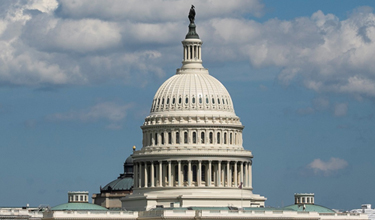
Case Studies:
Public Policy and Advocacy
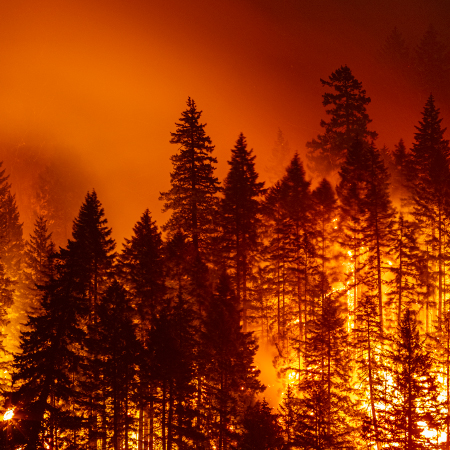
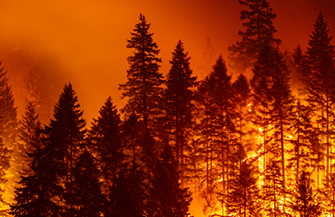
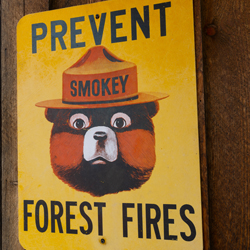
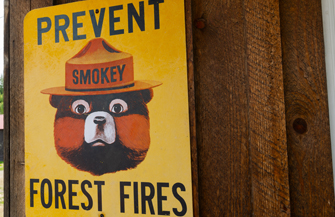
Partnering with USFS on Wildfire
The wildfire crisis has become all too evident in recent years. Decades of fire exclusion, combined with reduced management on federal lands, has led to a dangerous accumulation of natural fuels that create ladders which enable fires to reach the crowns of trees. A drier weather cycle in some regions has further exacerbated fire conditions. Adding to the complexity of the wildfire challenge is the growing wildland urban interface (i.e., the area where developments come into contact with undeveloped land), which increases the wildfire risk to people and homes.
In the West, land ownership is often a checkerboard that includes federal, state, county, and a wide range of private forest owners. This creates unique challenges in firefighting coordination and response. One measure identified to address the crisis was a change of approach in firefighting by enabling the use of a broader range of resources. Throughout 2022, we worked with the National Alliance of Forest Owners (NAFO) on dialogue with the U.S. Forest Service (USFS) regarding opportunities to enhance wildfire response capabilities.
Through NAFO, we worked on a memorandum of understanding (MOU), which was signed by early 2023, creating a partnership to enhance cooperation between private working forest owners and public land managers during wildfires. The partnership between USFS and NAFO members allows private resources to fight fires in areas of adjacent ownership with National Forest System lands. The MOU is a first-of-its-kind firefighting partnership.
During 2023, we worked, along with NAFO and our peers, to build on the fire suppression MOU through developing a second MOU with USFS. The second MOU was signed in early 2024 and seeks to mitigate wildfire risk through cross-boundary fuel break planning, construction, and maintenance. The MOU provides the framework for coordinating public and private fire mitigation strategies by enabling the construction of National Environmental Policy Act-ready fuel breaks on National Forest System lands as an extension to fuel breaks on adjacent privately owned forests.




Environmental Product Declarations
Our industry has been experiencing an increase in questions regarding the environmental impacts of our manufactured wood products from architects, home builders, homeowners and others who utilize our products in the built environment. To help respond to these questions, we have adopted a tool known as an Environmental Product Declaration (or, EPD).
An EPD is a standardized report containing life cycle assessment information from the cradle to gate for a specific product. In the case of solid wood products, like lumber for example, an EPD reports the environmental impacts of the product throughout its life cycle, including timber harvesting, transportation, and manufacturing. EPDs contain important information about a product such as its composition, life-cycle environmental impacts, material content, water and energy usage, and other product information.
The benefit of the EPD to the consumer is that it provides a simple and easy way to understand and identify which products are the most environmentally friendly, having the least impact on the environment. The benefit of EPDs to our industry is that they help tell the story about why building with wood is a good thing for the environment. Compared with alternative building products, such as concrete and steel, wood is inherently preferable from the lens of its contribution to greenhouse gas emissions: Wood is essentially stored carbon, and manufacturing wood products typically results in fewer greenhouse gas emissions than the manufacturing of alternative building products.
The American Wood Council (AWC) is leading the effort in our wood products industry to develop EPDs for our solid wood products. To ensure consistency and provide standardization in methodologies, the development of EPDs is governed by generally accepted Product Category Rules specific to each product type. The wood industry was the first to develop transparent, third-party verified EPDs in partnership with Underwriters Laboratories and in conformance with international standards (SO 14025, 14040, 14044, and 21930).
In 2020, AWC joined forces with the Canadian Wood Council (CWC) to issue industry-average EPDs for several North American structural wood products: softwood lumber, softwood plywood, OSB, glulam, LVL, LSL, wood I-joists, and Redwood lumber.
In response to recent strong demand for more granular data, AWC has been hard at work to develop regional EPDs for many of these products. In 2024, they released three third-party verified regional product EPDs for U.S. Inland Northwest softwood lumber, U.S. Pacific Coast softwood lumber, and U.S. Southern softwood lumber. More regional EPDs are expected to be released throughout 2025 and currently two regional plywood EPDs are underway for the U.S. Pacific Northwest and U.S. South.


